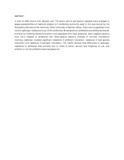| dc.description.abstract | A total of 2080 bovine milk samples, and 775 canine wound and sputum samples were analysed to assess susceptibilities of bacterial isolates to 5 antibiotics commonly used in the area served by the Ambulatory Services of the Veterinary Clinic, University of Nairobi, Kenya. There was no significant time trend in pathogen resistance to any of the antibiotics. Broad spectrum antibiotics and antibiotics that act primarily by inhibiting ribosome function were associated with least resistance. Gram-negative bacteria were more resistant to antibiotics than Gram-positive bacteria. Analysis of 1st-order interactions involving resistance revealed significant resistance X antibiotic interaction, resistance X host species interaction and resistance X pathogen interaction. The results showed that differences in pathogen resistance to antibiotics was primarily due to mode of action, amount and frequency of use, and whether or not the antibiotic was broad spectrum. | en_US |

